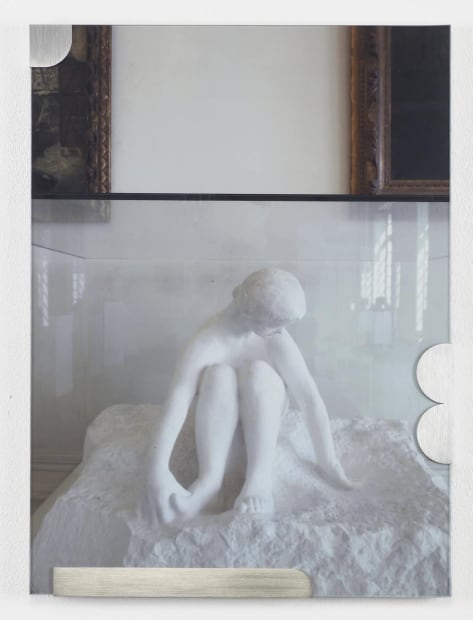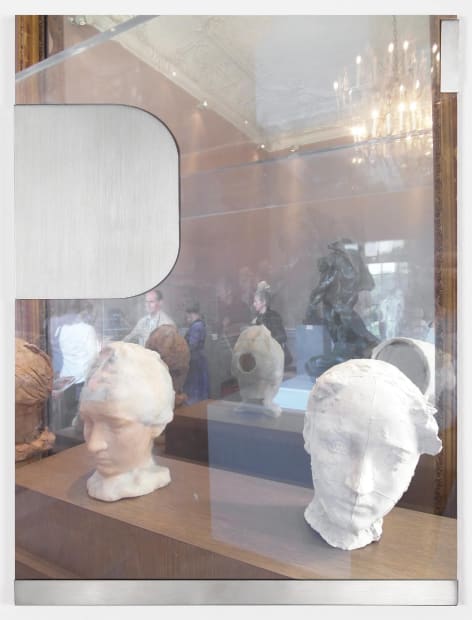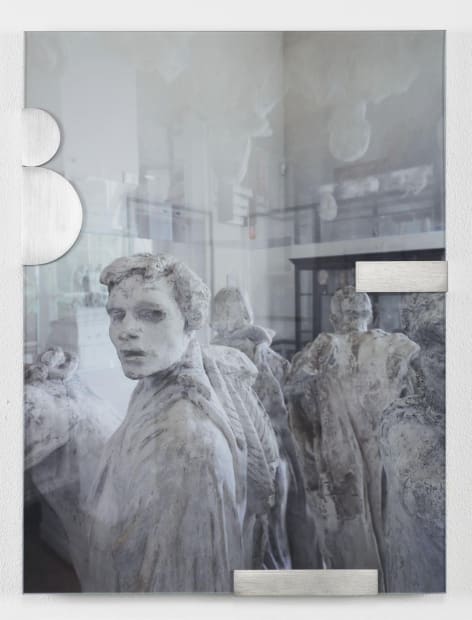NICOLE WERMERS: HOTEL BIRON: KUNSTVEREIN FÜR DIE RHEINLANDE UND WESTFALEN, DÜSSELDORF
Nicole Wermers, Hôtel Biron, 16th July – 12th August 2011, Kunstverein für die Rheinlande und Westfalen, Düsseldorf
Nicole Wermers‘ works target the suggestive appeal of surfaces and the adaptation of a familiar fine-art aesthetic within the overall design of our daily life. Ashtrays resembling sculptures or sculptures that remind one of security devices at the exit of department stores blur the distinctions between functional design and autonomously conceived art. The works she has devised for her exhibition in the Kunstverein also fall into this category.
Placing standard industrial shelving upside down reveals flooring made from metal with edges folded down. This particular type of manufacture tends to make the flooring look bigger than it actually is and increases the stability of the unit. Independent of its actual functional context, these hollow spaces of an upturned shelf can also be used as an independent module for storage and display in order to present more amorphous substances, such as sand and water.
Surfaces of water and the sunlight reflected in them, the sky, and nature are numbered among the most frequently cited visual stimuli that people associate with happiness and natural beauty. The sculptures, devised to be shown in the open, are therefore often designed so that water can accumulate in the depressions, in a similar way perhaps to the works of the British sculptress Barbara Hepworth.
Nicole Wermers’ sculpture, which actually is reminiscent of an upturned industrially manufactured shelf unit, presents water as if it had been made for this express purpose. A peculiar shift is achieved via the deliberate misuse and by isolating a specific observation which can actually only normally be performed outdoors. As a furnishing for the space and by means of the inclusion of the element water, this sculpture prompts associations ranging from the petri dish to the swimming pool. However, as an open storage system or display, it represents a counter design to the closed museum variety. In addition, there are photographs taken at the Musée Rodin in Paris. They also testify to an individual synthesis of art and interior. Innumerable mirrors in the rooms of the Hôtel Biron – an hôtel particulier or grand urban dwelling, which was inhabited at one time by several artists, including Rodin – reflect the exhibited sculptures as well as the viewers as they look at them. The photographs show shimmering glass, the reflective surfaces of display cases, and details of the exhibited sculptures and furnishings. The theme here is the presentation of objects and sculptures behind glass – both as museum pieces and commodity items – and the postulation of different degrees of function, as well as, in equal measure, the notion of the private interior as an exhibition site.
Wermers displays these photographs in frames reminiscent of simple clip frames, whereby the neat fixings have been replaced by elaborate applications. The frames themselves, which normally tend to recede subtly into the background, take on their own framing function that duly asserts itself as independent decoration. Geometrical elements, such as semicircles and rectangles of differing sizes, hold the photograph, glass and back in position. Unlike the original appearance of the frame, the clips are not distributed regularly, but correspond instead to the respective motif beneath them. They add an illusionistic aspect to the photographs and transform them into three-dimensional collages. Their function, material substance and positioning are reminiscent of uniform hinges, fixings, and locks on the modern glass doors of shops and offices, as well as of the methods of mounting panes of glass in public places and public transport.






